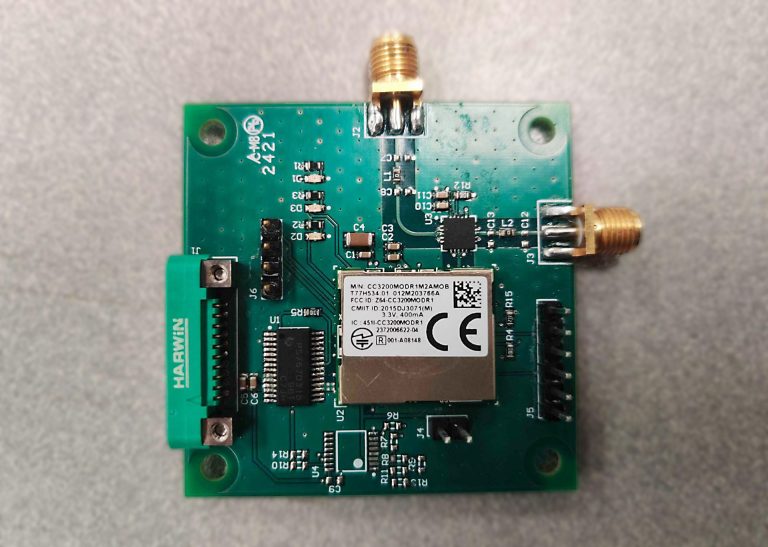All commands and data to and from MoonRanger are conveyed via Wi-Fi when it is within radio range of its lander. For redundancy, it matters that both MoonRanger’s computers have independent means of Wi-Fi to the lander. The Wi-Fi chip on the autonomy computer (TX2i) facilitates most of the direct-to-lander comm. The simpler, more hardened Onboard Computer (OBC) lacks a Wi-Fi capability, so MoonRanger provides a PCB board (denoted ‘Wi-Fi Board’) for this purpose. The Wi-Fi Board talks to the Onboard Computer via RS422 and talks to the lander via Wi-Fi.
To provide redundancy, the Wi-Fi board has an RF switch that can select between two antennas. This protects against a failure of a single antenna or the inability to connect due to one antenna not having a line of sight to the lander.
The antennas are mounted on top of the solar panel. Because of this, the impedance of the antennas may not be exactly 50 ohms. To overcome this, the Wi-Fi board has a matching network for each antenna, reducing the overall loss in the transmission path.
The earliest prototype version of the Wi-Fi board achieves the function but doesn’t conform to the board size, mounting convention and external connector type of the flight version. The board activates one of the two possible antenna connectors at any given time. The device uses the stronger signal arriving between the two, and ignores the other at any given time. The external connector provides power & ground and communicates to the Onboard Computer via RS422.
This is the design of the Wi-Fi board. It will be populated at CMU after being printed by a board fab house. The size, mounting, and edge connectors conform to MoonRanger’s PC104-like design standard for mounting, thermal regulation and rad protection. It incorporates a circuit that compares signal strength to evaluate which antenna will be utilized at any given time. This board has the most generous chip spacing and unoccupied area among all MoonRanger’s PCBs. That is due to the simplicity of its single purpose and minimalist chipset for achieving its function.


